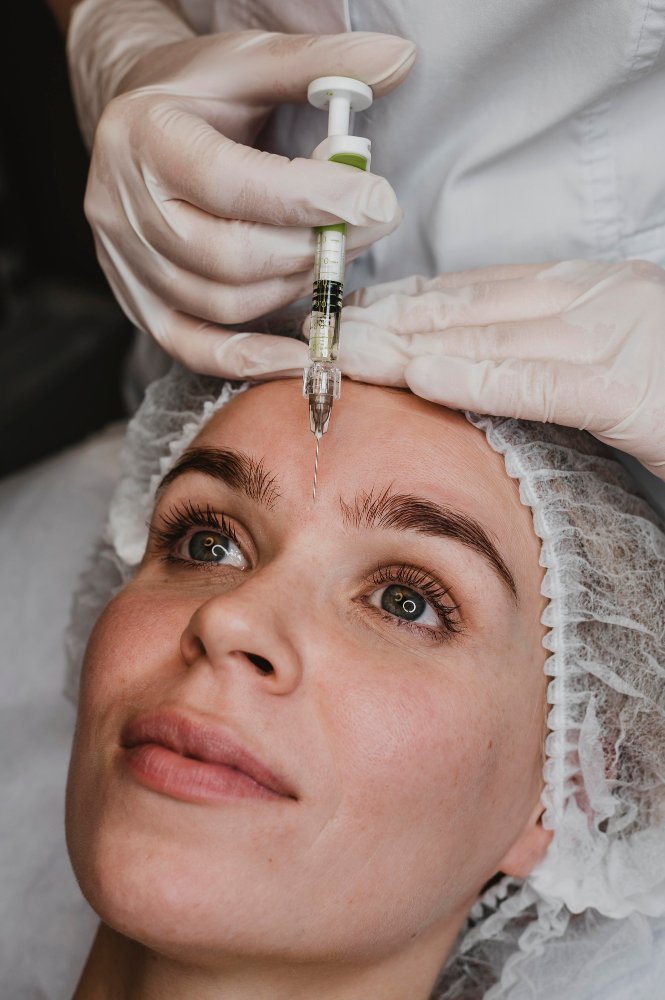Treatment Overview
Temporal Forehead Reduction is a surgical procedure aimed at narrowing and contouring the sides of the forehead (temporal regions) to create a more balanced, harmonious, and proportionate upper-face appearance. This procedure is ideal for patients with wide or boxy foreheads who want a softer and more aesthetically pleasing facial profile.
In Korea, surgeons use advanced bone contouring techniques, precise incision placement, and 3D surgical planning to achieve natural results. Temporal forehead reduction is often combined with forehead bone contouring, hairline advancement, or brow lifts to optimize overall upper-face symmetry.
Purpose & Benefits
- Narrows wide or broad forehead
- Creates a smoother and proportionate upper-face contour
- Softens masculine or boxy forehead appearance
- Enhances facial symmetry and overall aesthetics
- Can be combined with other forehead or upper-face procedures for comprehensive results
Ideal Candidates
- Individuals with wide, boxy, or asymmetrical foreheads
- Patients seeking a more proportionate and balanced upper-face
- Adults in good health with realistic expectations
- Those desiring permanent structural improvement
- Patients looking for combination procedures to enhance overall facial harmony
Possible Risks & Complications
- Temporary swelling, bruising, or numbness
- Mild forehead or temporal discomfort
- Infection or hematoma (rare)
- Visible scarring if incision healing is suboptimal
- Rare need for revision surgery if symmetry is not ideal
Surgical Techniques Used
- Temporal Bone Contouring – Precision reshaping and reduction of the lateral forehead
- Endoscopic Techniques – Minimally invasive options for select patients
- Combination with Hairline Advancement or Brow Lift – Enhances facial harmony
- 3D Imaging & Customized Planning – Ensures natural, symmetrical, and proportionate results
Recovery & Aftercare
- Swelling and bruising for 1–2 weeks
- Mild discomfort managed with pain medication
- Avoid strenuous activity or heavy lifting for 2–3 weeks
- Follow-up visits to monitor healing and symmetry
- Most patients return to work in 1–2 weeks; final results visible in 1–2 months
Results & Longevity
- Narrower, proportionate, and balanced forehead
- Permanent structural correction
- Enhanced facial harmony and natural appearance
- Long-lasting results when combined with other upper-face procedures
Treatment Process in Korea
Step-by-Step:
- Consultation & 3D Facial Analysis – Assess forehead width, temporal bone prominence, and overall facial proportions
- Customized Surgical Plan – Determine the extent of temporal reduction and combination procedures
- Procedure – Performed under general anesthesia with hidden incisions along the hairline or scalp
- Recovery & Immediate Aftercare – Swelling controlled with cold compresses, medications, and limited activity
- Follow-Up Visits – Ensure symmetrical, smooth, and natural results
Why Korea?
- Surgeons are highly skilled in craniofacial and upper-face contouring
- Advanced 3D planning ensures precise and natural outcomes
- Focus on proportionate and harmonious upper-face aesthetics
- Comprehensive post-operative care programs minimize downtime and ensure optimal healing
Cost Range in Korea
The cost for Temporal Forehead Reduction in Korea generally ranges from ₩6,000,000 – ₩12,500,000 KRW (approx. $4,500 – $9,400 USD), depending on:
- Surgeon’s expertise and clinic reputation
- Complexity of temporal bone reduction
- Combined procedures (hairline lowering, brow lift, forehead contouring)
- Inclusion of post-operative care and follow-ups
Global Price Comparison:
- USA & Europe: $7,500 – $14,000
- Japan: $5,500 – $10,000
- Korea: $4,500 – $9,400 (often includes 3D planning and comprehensive aftercare)
Popular Clinics in Korea
- ID Hospital – Experts in temporal and lateral forehead contouring
- Banobagi Plastic Surgery – Specializes in natural upper-face reshaping
- JW Plastic Surgery – Advanced precision techniques for forehead aesthetics
- View Plastic Surgery – 3D planning and minimally invasive procedures
- Regen Plastic Surgery – Combination surgeries for optimal upper-face proportion




